The Pass and a Threshold for the Tibetan Changpas
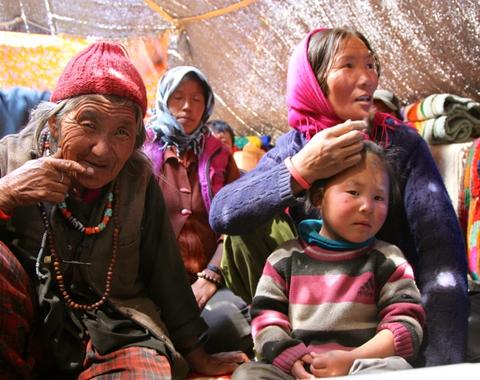
For the 'Changpas', the nomads of the remote Changtang plateau, the Parang Pass is the main access point to the markets of the prosperous Spiti Valley.
For the nomads of the Himalayas a pass is a gateway - a vital threshold to fresh pastures and the markets essential to their survival. The crossing provides catharsis - a rebirth of sorts - offering sustenance and safety for another season. The Changpas, as do all nomads across the Himalayan ranges, revere these passes with prayers and offerings: to them these are powerful and spiritual places, and their safe passage depends on the whim of the incumbent power, whom they seek to appease - for he is a fickle master, prone to sudden and sometimes violent mood swings.
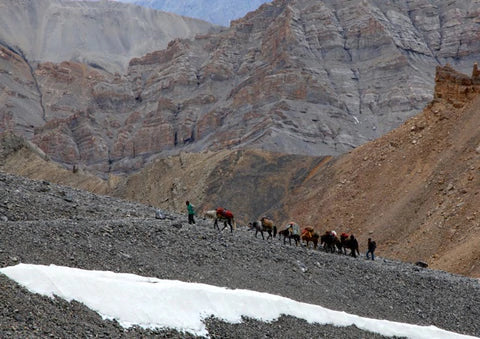
Such are the forces at play that the technologies of the modern world offer little protection along these age-old routes. Disconnected from the world, and unable to call on help in a crisis, the risks in these parts are very real. Even for the nomads, the traverse of a pass is a test of strength and endurance.
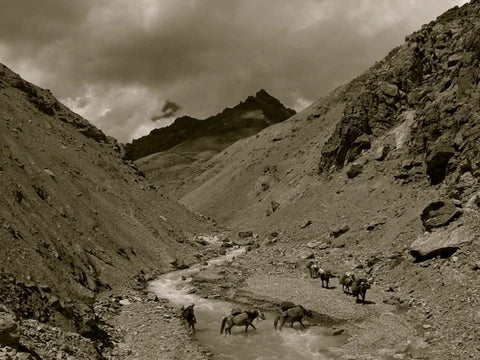
One of the many hazards that nomads and travelers in the mountains must face on a daily basis: the river crossing. Here the caravan is on the way to Parang pass.
These routes pose a yearly challenge for the nomads. They are the pillars on which the year rests, and timing these voyages correctly is of vital importance. The community travels together: the strong carry the infirm - even through waist-deep snows, while the yaks, sheep and goats are loaded with the family possessions and tradable goods, such as salt and wool. They must fend for themselves: those animals that are too weak to cross the snows or rivers will be left to the wolves, xiangku, and the vultures.
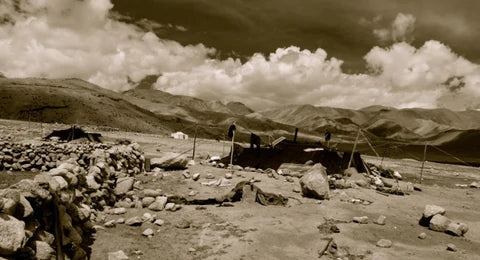
Not far from lake Tsomo Riri, a nomad community continues to use the traditional, black yak wool tents. A yak wool tent is heavy and requires hundreds of hours of labour to weave, but it is durable, warm, breathable and waterproof. Despite their lesser quality, today it is common to see white canvass tents on the grasslands. These are both cheaper and more readily available.This is a life lived in perpetual motion in the harshest of environments, and keeping to its rhythms is harder for those that remain: with children attending boarding schools and some of the community already resettled in towns, fewer hands share the daily tasks of herding, milking, churning butter and cheese, "Churra", spinning wool, and cooking meals.
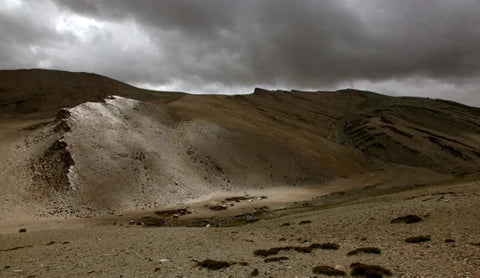
Those that remain: the tents of the 57 families of this nomad herder community used to fill the valley. 20 years later, 17 families remain. Where there were once nomad tents, there are now scratches in the dirt and crumbling walls.
A threshold looms ahead for the nomads; it is one through which they can never return. Does the nomadic way have a future in the Himalayas? We will know within a decade, when the time comes for the younger generation to choose between the life of the town or a life in the heights.
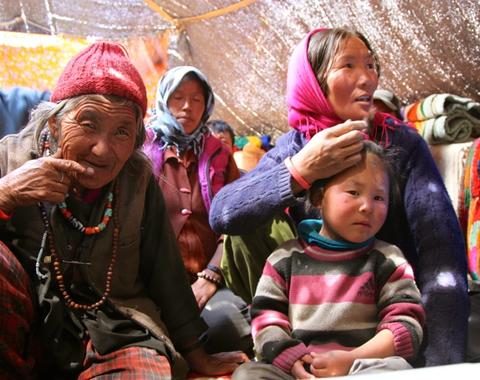
The last of the nomads: three generations of nomads assemble to discuss the challenges they face, their future, and yak wool.
Read more about the kora Story and our yak wool fabrics here.